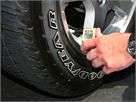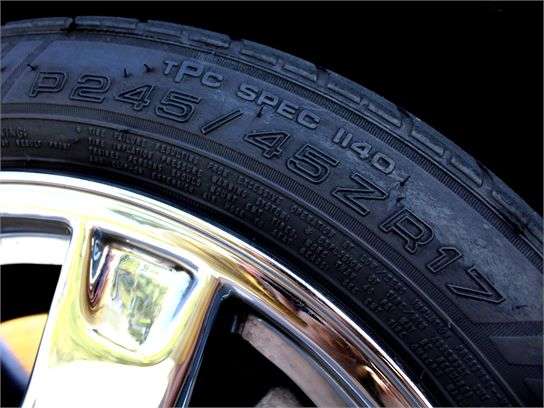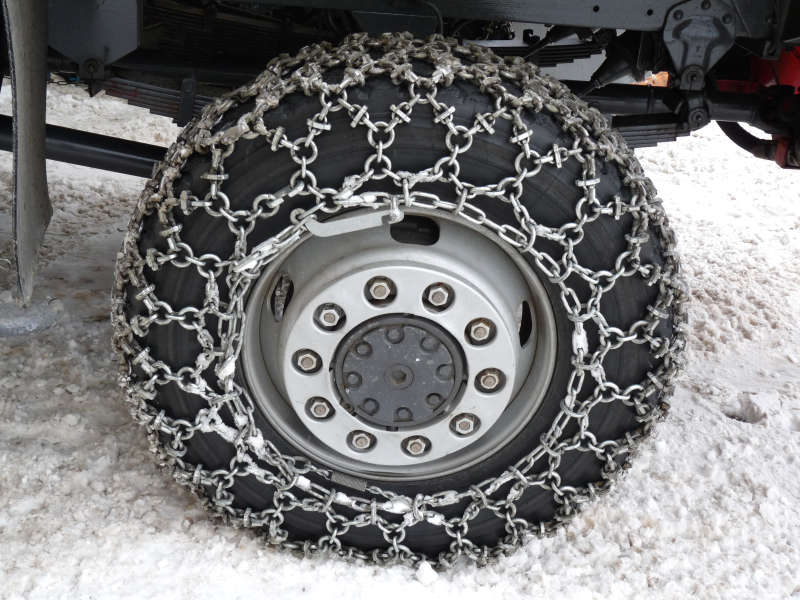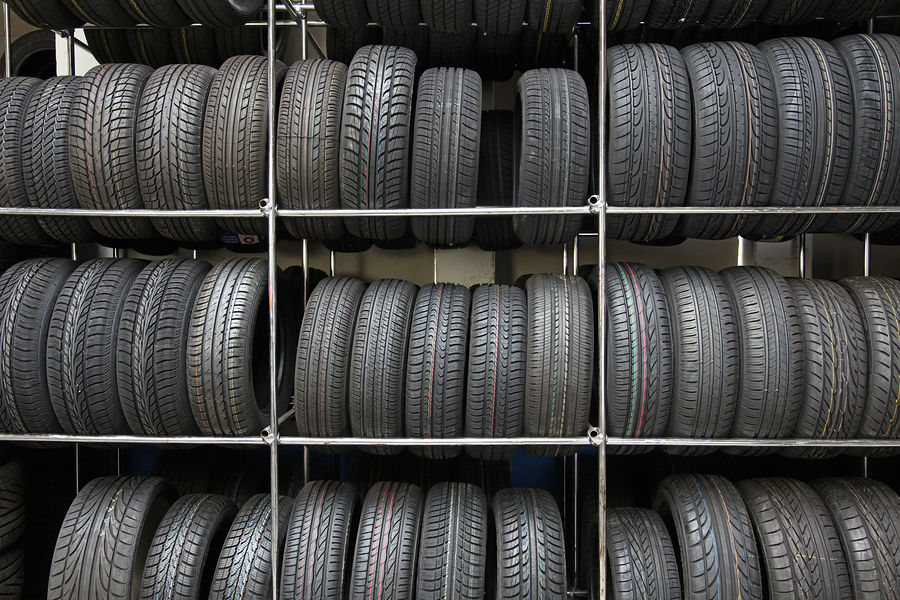Recent Articles
Popular Makes
Body Types
How to Buy Tires
Car Tire Buying Tips

We all hate spending money on our cars, but buying new tires is important to your vehicle's safety and they need to be maintained. Usually, that means keeping the manufacturer-recommended tire pressure and rotating them on a regular basis. But sooner or later, they are going to wear out and you'll have to buy new tires. But the question may be how to buy tires? And how can you tell if it's time for a change? The average tire comes with about 11/32-inch of tread depth. Running perpendicular to the tread at various intervals you will find wear bars. Wear bars are 2/32-inch tall and represent the last usable bit of tread. Check all four tires. If any part of a tire is worn within another 2/32-inch of the wear bars, it's time for a replacement. Another easy rule of thumb is to use the penny trick. Place a penny with Lincoln's head down into the shallowest bit of tread. If you can see the top of old Abe's head, it's time to buy new tires. Even if you can see Abe's hairline, it may be time for new shoes if your tires no longer perform well in the rain or snow or if one or more tires is damaged. A damaged tire can be fixed if the puncture is in the middle of the tread. If the puncture is too close to the edge of the tread, too big, or in the sidewall, you'll have to replace that tire. If you are replacing only one tire, it's best to buy the same model and brand as the other three. Examining your tires may reveal that only two need to be replaced. If that's the case, buy new tires and put those new ones on the back of your car, whether it's front- or rear-wheel drive. New tires channel rain away better than old ones, so putting the new tires on the rear can prevent fishtailing in the rain, which could lead to an accident. Read on to find out how to buy tires for your car, truck, or SUV.
Buying Car Tires
Buying Car Tires The first thing to do when buying car tires is to write down the original equipment tires' size, load and speed ratings, and seasonal designation (learn how to read a tire sidewall). Armed with this information, you can shop online or go to your local tire store. The easiest way to shop for replacement tires is to buy what you had. If your car had Michelin MXV4 P225/55/R17s and you liked the way they performed, find a dealer that sells Michelin and get the same tires. Very simple. However, there may be other factors to consider. You may want tires that are cheaper or that better match your driving habits and preferences. Quietness, ride quality, precise handling, off-road traction, and towing capacity are all factors to consider. In these cases, communicate your desires and size information with your tire salesperson and ask what tires fit those criteria. Price may tempt you to choose a tire with a lesser speed or load rating, but don't skimp. The automakers and tire manufacturers work together to outfit each vehicle with the right tire. Size, speed rating, and load rating are determined to give the car the desired ride, handling, and towing characteristics. If you put a tire with an S rating on a car that had H- or V-rated tires, the car will not handle as well as it should. If you go the other way and put a V-rated tire on a car that calls for a T or even an H rating, it will ride harder and the tires may make more road noise. If you intend to tow a boat, make sure you have the right load rating or you could suffer a blowout. Also consider climate. If you live in an area with snow, you should either buy all-season tires or snow tires for the winter. Some cars come with summer performance tires as standard equipment. The Acura TL, for instance, comes with 235/45WR17 summer tires. If you live in the north, be sure to get a set of snow or all-season tires so your TL can handle the demands of winter. The timing of your purchase can also be important in the north. If you're approaching the end of your tires' usable tread depth, it's better to buy a new set before winter hits than in the spring. You need the additional traction in the winter, not the summer. In fact, less tread depth actually provides more grip on dry pavement in the summer (though it will most likely lessen grip on wet roads). When it's time to right that check, be ready for sticker shock. America's love affair with big alloy wheels has driven up tire prices. Gone are the days of 13-, 14- and 15-inch tires that may cost $200-$300 for a set of four. Today, even the least expensive cars have 15- or 16-inch tires. Many midsize sedans have 17-inch Touring tires, and 18- and 19-inch tires aren't uncommon. Take for example the 2007 Toyota Camry, an everyday family sedan. The SE model has 215/55VR17 tires. Thanks to the V speed rating, this is a touring tire and the owner can expect to pay $130 to $200 each for replacements. That's $520 to $800 for a set of four. And if you have run-flat tires, expect them to be at least $300 each. But the tires aren't the only cost. Be aware that the tire store is going to hit you up for mounting, balancing, road hazard insurance, and a possible disposal fee for your old tires. Expect mounting and balancing to run $40 to $100 for a set of four tires. The disposal fee may be $2 to $5 each. Road hazard insurance, which covers you if a nail punctures the sidewall or the edge of the tread, may cost up to 10 percent of the price of each tire. Like any insurance policy, buying road hazard insurance is a gamble. It may pay off or you may never use it. I generally recommend against it.

Buying Truck and SUV Tires
Truck and SUV Tire Buying Tips Owners should pay even more attention to driving habits and towing needs when buying truck and SUV tires. Trucks and SUVs that are intended for mostly road use will usually have regular passenger tires with a P prefix in their size description. Larger trucks intended for off-road and heavy-duty use will have tires that start with an LT prefix. If you have, for instance, a Jeep Grand Cherokee, and you intend to tow your 22-foot boat to the lake, you should buy LT tires rated to handle that load. If you only use the Grand Cherokee to commute to work and rarely fill it with anything other than kids and groceries, a regular passenger tire will do the trick, and it will be cheaper, too. Where you tow the boat can also affect your purchase decision. If it's normally on dry pavement, you'll want a less aggressive tread pattern. If you drive six miles on a muddy, bumpy dirt road to get to the lake, a somewhat aggressive tread designed for on- and off-road use will be appropriate. And if you take the Jeep off-road regularly, you'll want a very aggressive off-road tread pattern. Some buyers may be tempted to choose an aggressive tread pattern for regular highway use because they like the looks. The tires will work just fine, but they will howl and whine and generally drive you crazy. Remember, the more aggressive the tread, the louder the tire. When buying truck tires or SUV tires, it's important to consider the type of driving you do and communicate that information to your tire salesperson.

Tire Buying Tips
Recap To summarize, when buying tires you should pay attention to these tire buying tips: 1) Write down the original equipment size, load rating, speed rating, and seasonal information, then choose something comparable. 2) Consider the type of driving you do, and buy a tire that matches the performance, ride, towing capacity, and quietness characteristics you desire. 3) Avoid skimping and buying a tire with a lesser speed or load rating. 4) Buy at the right time so you'll have good winter traction. Follow these tire buying tips and you'll choose the tire that matches your needs. Most of all, however, you'll stay safe.

Photo by Adobe Stock